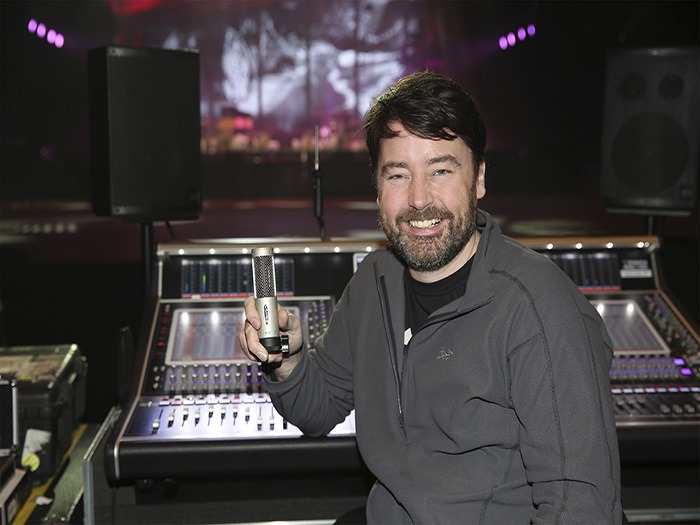During Lana Del Rey’s latest LA to the Moon tour, the artist maintains a hectic schedule that requires robust equipment to keep everything working according to plan. Step-forward ribbon microphones from Burbank, CA-based Royer Labs, described as an integral part of the setup—ensuring crisp electric guitar sounds and on-the-road durability.
Kevin Madigan is the FOH engineer for Lana Del Rey. Madigan has been the talent behind the mixing console for storied acts such as Crosby, Stills, Nash, and Young, David Gilmour, The Smashing Pumpkins, Ray LaMontagne, and Lucinda Williams to name just a few. When it comes to miking electric guitars, his preference is for the Royer Labs R-10 and R-121 ribbon microphones.
“For the LA to the Moon tour, I’m using one R-10 and one R-121 specifically for miking the electric guitar cabs,” he explained. “The R-121 is a long-term favorite and the R-10 is new for me. Currently, the R-10 is on its first outing for this tour. I was excited to try it out after hearing about it from Royer and it’s working out perfectly. It has a slightly brighter tone, which has been just right for use on a Vox AC30 guitar amp.”
On this tour, Madigan is using a Royer R-121 and adjacent dynamic mic to close-mic a Marshall 4 12 cabinet powered by a Metropoulos head. On the Vox AC30, he’s using a single R-10 centered on one speaker’s dome.
Madigan explained: “I know from previous experience that the R-121’s natural sound and ability to handle high SPLs makes it a great choice for miking guitar. When I put Royers on my guitar cabinets, what I get in the FOH system sounds like I’m standing in front of the amps – the reproduction is amazing. For this tour, the guitar cabinets are positioned under the stage to keep the onstage level down. Having great guitar tones reproduced for FOH is important, but we’re also trying to capture an authentic sound for our guitarist, who is using in-ear monitors. In-ears can be hard sounding, but when I put Royers on the cabinets, the in-ears sound and feel much more organic, less pointy and hard, which musicians really appreciate. We’re also running these offstage amps quite loud, but with the R-10 and R-121, the high SPLs have proven to be no problem for either mic.”
When a new microphone such as the Royer Labs R-10 is introduced, questions frequently arise, so responsive customer and technical support services are crucial to any tour. In this regard, Madigan rates Royer Labs best in class. “Because of my previous experience with the R-121, I really haven’t needed much in the way of customer support on this tour,” he explained. “However, it’s great being able to easily reach the guys on the end of the phone who actually design and manufacture the mics when I do have questions. Over the years, they’ve been very responsive and helpful.”
Madigan concluded: “Royer mics and the people behind them have always been first-class. The R-10’s lower price is going to let a lot more people experience that impressive Royer ‘thing’ that works so well for me and a lot of other FOH engineers I know.”


